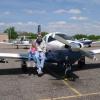-
Posts
1,832 -
Joined
-
Last visited
-
Days Won
4

mooniac15u replied to craftyboy's topic in Modern Mooney Discussion

mooniac15u replied to craftyboy's topic in Modern Mooney Discussion

mooniac15u replied to craftyboy's topic in Modern Mooney Discussion

mooniac15u replied to dcjohnst's topic in General Mooney Talk

mooniac15u replied to mbeatty67's topic in Vintage Mooneys (pre-J models)

mooniac15u replied to cliffy's topic in General Mooney Talk

mooniac15u replied to cliffy's topic in General Mooney Talk

mooniac15u replied to rakesb's topic in Vintage Mooneys (pre-J models)

mooniac15u replied to Joe G.'s topic in Vintage Mooneys (pre-J models)

mooniac15u replied to Joe G.'s topic in Vintage Mooneys (pre-J models)

mooniac15u replied to wombat's topic in Vintage Mooneys (pre-J models)

mooniac15u replied to urbanti's topic in Vintage Mooneys (pre-J models)

mooniac15u replied to urbanti's topic in Vintage Mooneys (pre-J models)
We have placed cookies on your device to help make this website better. You can adjust your cookie settings, otherwise we'll assume you're okay to continue.